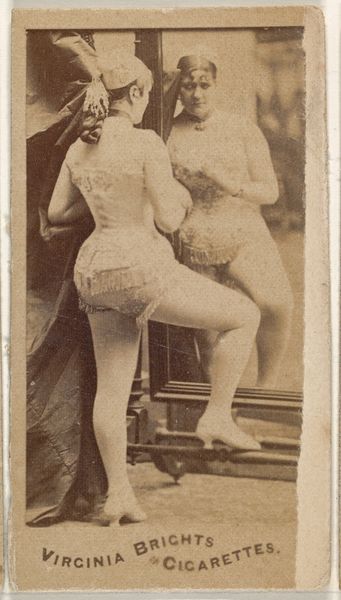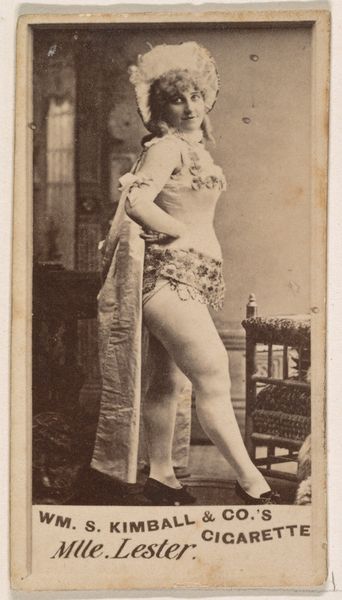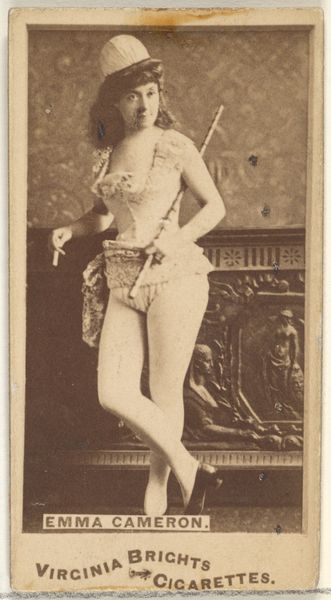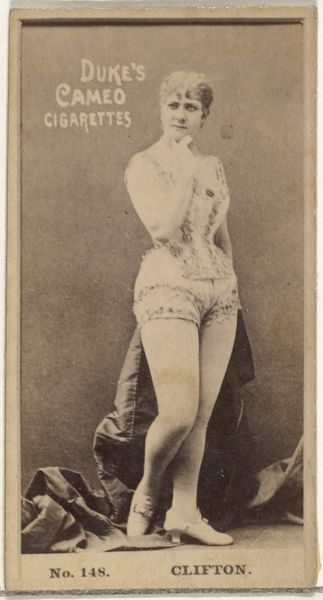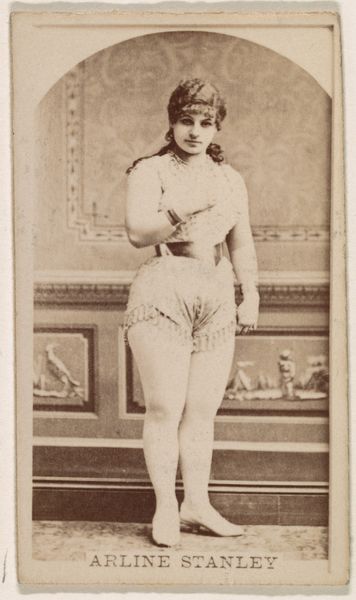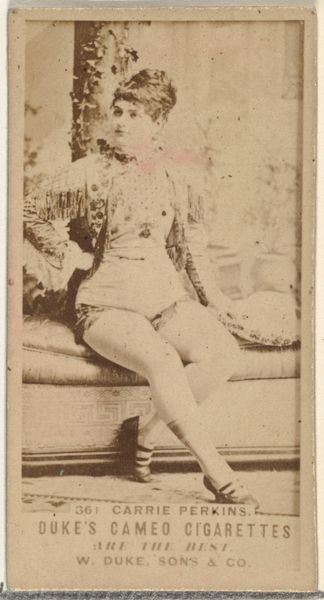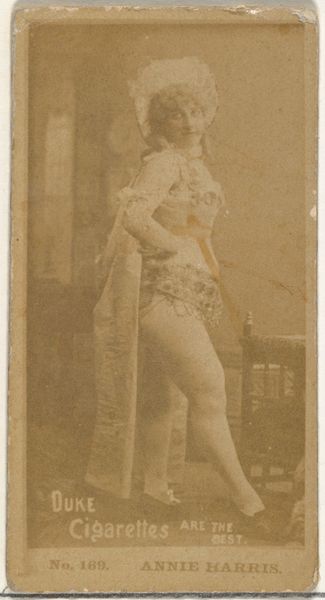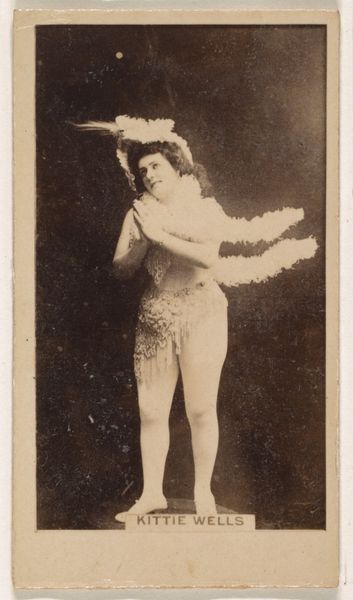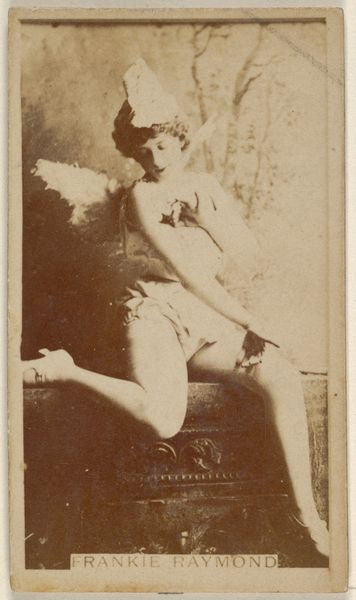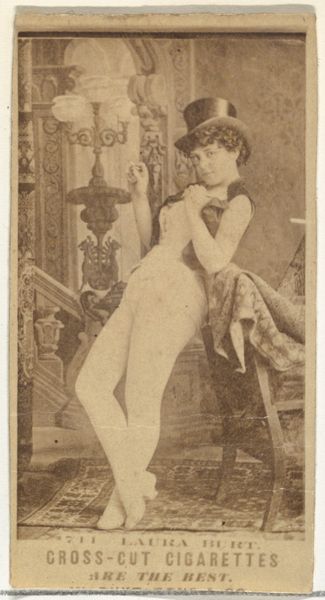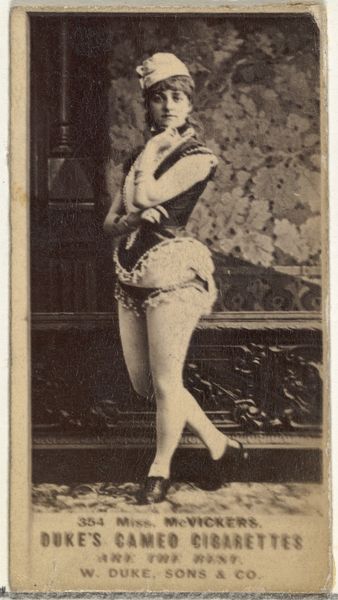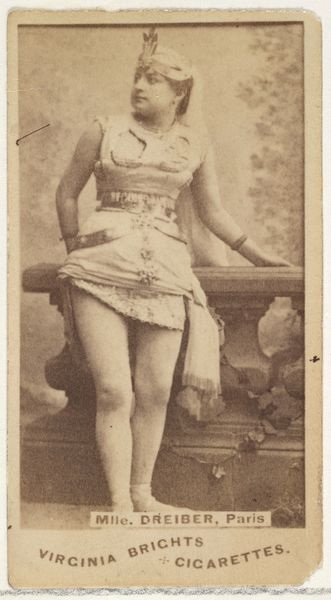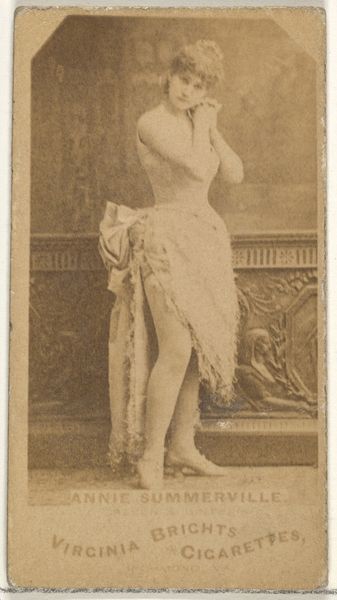
From the Actors and Actresses series (N45, Type 5) for Virginia Brights Cigarettes 1885 - 1891
0:00
0:00
drawing, print, photography
#
portrait
#
drawing
# print
#
figuration
#
photography
#
19th century
#
men
#
erotic-art
Dimensions: Sheet: 2 3/4 x 1 3/8 in. (7 x 3.5 cm)
Copyright: Public Domain
Curator: The object before us, dating from approximately 1885 to 1891, is part of a series by Allen & Ginter, specifically the "From the Actors and Actresses series (N45, Type 5) for Virginia Brights Cigarettes." This particular print, a form of photography intended for mass consumption through cigarette packaging, presents us with an intriguing glimpse into the era's visual culture. Editor: It's quite a sensual image, even by today’s standards. I’m immediately drawn to the woman's gaze, focused intently on her reflection, while we, the viewers, are invited into her private moment. The sepia tones soften what could be an overtly sexualized depiction, but it's still provocative, right? Curator: Precisely. What is interesting is the deliberate staging of this moment for a consumer product. The rise of mass media at this time led to the creation of the celebrity, using seductive imagery in trade cards. The woman's reflection, combined with her revealing attire, emphasizes not only the female form but also the product as something glamorous. Editor: Absolutely. And placing her in what seems like a dressing room, perhaps preparing for a performance, there's a clear intersection of performance, visibility, and consumption here. The "Virginia Brights" branding makes a direct appeal—buy our cigarettes, become closer to this image of beauty and stardom. Curator: These trading cards played a vital role in disseminating specific ideals and aspirations. Here we have this carefully constructed femininity used to sell a habit-forming product, aimed squarely at a male demographic. Editor: Right. The erotic art designation might raise eyebrows today, but at its core is the construction of an appealing image, the commodification of femininity. So, let's look critically at who is allowed to be seen, and who profits from this visibility. What this cigarette card asks is whether such power dynamics and consumerism has evolved today or it just presents itself differently. Curator: Indeed, analyzing this print allows us a glimpse into how our relationship with art has always been mediated through marketing and societal expectations of public figures. Editor: Ultimately, the picture and purpose for art, then and now, encourages discussion about desire, power, and image construction—who's looking, why, and with what effect?
Comments
No comments
Be the first to comment and join the conversation on the ultimate creative platform.

